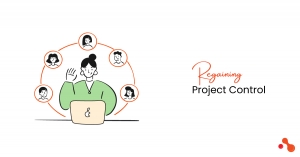In the ever-evolving landscape of industrial manufacturing and construction, sustainability has emerged as a non-negotiable priority. Industries worldwide are seeking innovative solutions to reduce their environmental footprint while maintaining efficiency and productivity. Among various technologies advancing this green agenda, eco-friendly hydraulic mixing barrels are making a significant impact. These devices, essential in the blending and mixing of materials such as concrete, adhesives, and other viscous compounds, are now being redesigned to align with environmental sustainability goals without sacrificing performance.
Understanding Hydraulic Mixing Barrels
Hydraulic mixing barrels are integral components in many industrial processes requiring precise and consistent mixing. Utilized in sectors like construction, chemical manufacturing, and waste management, these barrels employ hydraulic mechanisms to agitate and blend materials efficiently. Traditionally, hydraulic mixing barrels have been powered by energy-intensive systems and constructed with materials posing environmental disposal challenges.
Why the Shift to Eco-Friendly Hydraulic Mixing Barrels?
The growing demand for eco-friendly industrial equipment stems from multiple factors:
1. Regulatory Pressure: Governments globally are instituting stringent environmental regulations aimed at reducing industrial pollution and energy consumption. Compliance mandates are pushing manufacturers to adopt greener technologies.
2. Corporate Responsibility: Enterprises are increasingly adopting sustainability as a core aspect of their business strategy. Utilizing eco-friendly hydraulic mixing barrels supports corporate social responsibility (CSR) and enhances brand reputation.
3. Cost Efficiency: Eco-friendly designs often lead to operational cost savings through improved energy efficiency, reduced maintenance, and longer equipment lifespan.
4. Market Demand: Consumers and clients in industrial markets are exhibiting preferences for companies that demonstrate environmental stewardship, influencing supply chain dynamics.
Key Features of Eco-Friendly Hydraulic Mixing Barrels
Several advancements characterize the next generation of eco-friendly hydraulic mixing barrels:
Sustainable Materials: Instead of conventional steel with high carbon footprints, manufacturers are experimenting with recycled metals and composite materials that offer durability and lower environmental impact.
Energy-Efficient Hydraulic Systems: Implementation of advanced hydraulic motors with variable speed drives and improved sealing technologies reduces energy consumption and oil leakage.
Smart Controls: Integration of IoT sensors and automated controls helps optimize the mixing process, minimizing waste and energy use by adjusting the operation in real-time based on material properties.
Low Emission Fluids: Use of biodegradable hydraulic fluids and lubricants reduces contamination risks and supports easier disposal without harming ecosystems.
Modular and Repairable Designs: Equipment designed for easy disassembly promotes repair and recycling at the end of lifecycle, reducing landfill waste.
Impact on Industrial Applications
Eco-friendly hydraulic mixing barrels are particularly transformative in the following areas:
Construction Industry: They enable greener concrete production by ensuring uniform mixing with reduced water and cement waste, directly impacting carbon emissions linked to construction.
Chemical Manufacturing: Precise and energy-efficient mixing improves the quality of chemical products while minimizing volatile organic compound (VOC) emissions.
Waste Treatment: Hydraulic mixers that support eco-friendly operations assist in the treatment of sludge and organic wastes by improving bioreactor efficiency without excessive energy use.
Food Processing: Incorporating eco-conscious hydraulic mixers ensures hygienic and sustainable blending of food products, aligning with global food safety and environmental standards.
Challenges and Opportunities
Despite the benefits, some challenges exist:
Initial Investment Costs: Eco-friendly components and technologies may have higher upfront costs, necessitating comprehensive ROI evaluations.
Technology Integration: Industrial plants must adapt existing systems to new equipment, which can require training and process reevaluation.
Supply Chain Constraints: Sourcing sustainable raw materials relies on a mature supply chain to meet quality and volume demands.
However, these challenges simultaneously present opportunities for innovation, partnerships, and market leadership.
Future Outlook
The trajectory for eco-friendly hydraulic mixing barrels is promising. Ongoing research focuses on further reducing energy consumption, enhancing automation, and maximizing lifecycle sustainability. Industry collaborations and government incentives are expected to accelerate adoption rates.
Adapting to this green revolution is more than an environmental imperative; it is a strategic business decision that ensures competitiveness and compliance in a rapidly changing industrial ecosystem.
Conclusion
The rising demand for eco-friendly hydraulic mixing barrels symbolizes a broader industrial shift towards sustainable operations. By embracing cutting-edge materials, energy-efficient designs, and smart technologies, these barrels are central to achieving reduced environmental impact without compromising industrial performance. Companies investing in such innovations are not only contributing to a healthier planet but are also positioning themselves for long-term success in an increasingly eco-conscious market.
For industry leaders, engineers, and decision-makers, now is the time to explore and adopt eco-friendly hydraulic mixing solutions as a catalyst for sustainable growth and operational excellence.
Explore Comprehensive Market Analysis of Hydraulic Mixing Barrel Market
SOURCE -- @360iResearch





